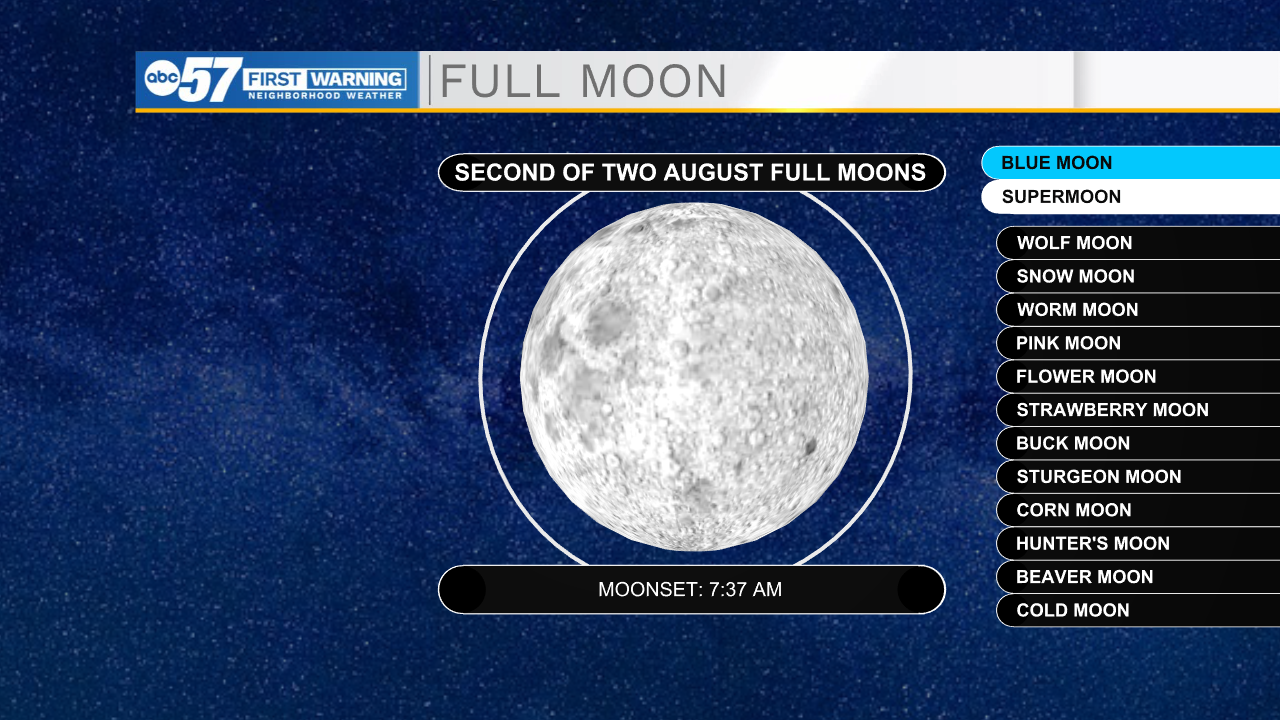Full moon, blue moon, supermoon - what does it all mean?
Wednesday night into Thursday morning, you'll be able to see the full blue supermoon. That's a lot of fancy descriptors for the moon, so what do they all mean? Spoiler alert: the moon's color will not change to blue tonight.
We get to the full moon phase about once a month. Every once in a while, if the full moon happens very early in the month, there is a chance to see a second full moon by the end of the month.
That is the case for August 2023. We had a full moon on August 1. We now have a second full moon for the night of August 30. When this happens, it is called a monthly blue moon.
You may have heard the phrase "once in a blue moon" before. Blue moons typically happen once every three years. The last time is happened was in 2021. Our next blue moon is in 2026.
The moon will not actually look like the color blue.
The next part of the description, supermoon, depends on the position of the moon relative to Earth. The moon's orbit is not a perfect circle. Therefore, there are times in the orbit when it appears closer to Earth, and times when it appears farther away from Earth.
When the moon is at its closest point to Earth, it is called "perigee." If this happens when the moon is also in the full moon phase, we title it a supermoon. It could look bigger, brighter, and more vibrant than normal full moons.
Supermoons can happen several times a year.
The next time we will have a blue moon and supermoon at the same time is in 2037.
The forecast tonight features clear skies and temperatures dipping into the upper 40s. There will be plenty of time to view it because we are free from clouds, but it could feel a little chilly.
The moon rises Wednesday evening at 8:36 p.m. and will set Thursday morning at 7:37 a.m.



